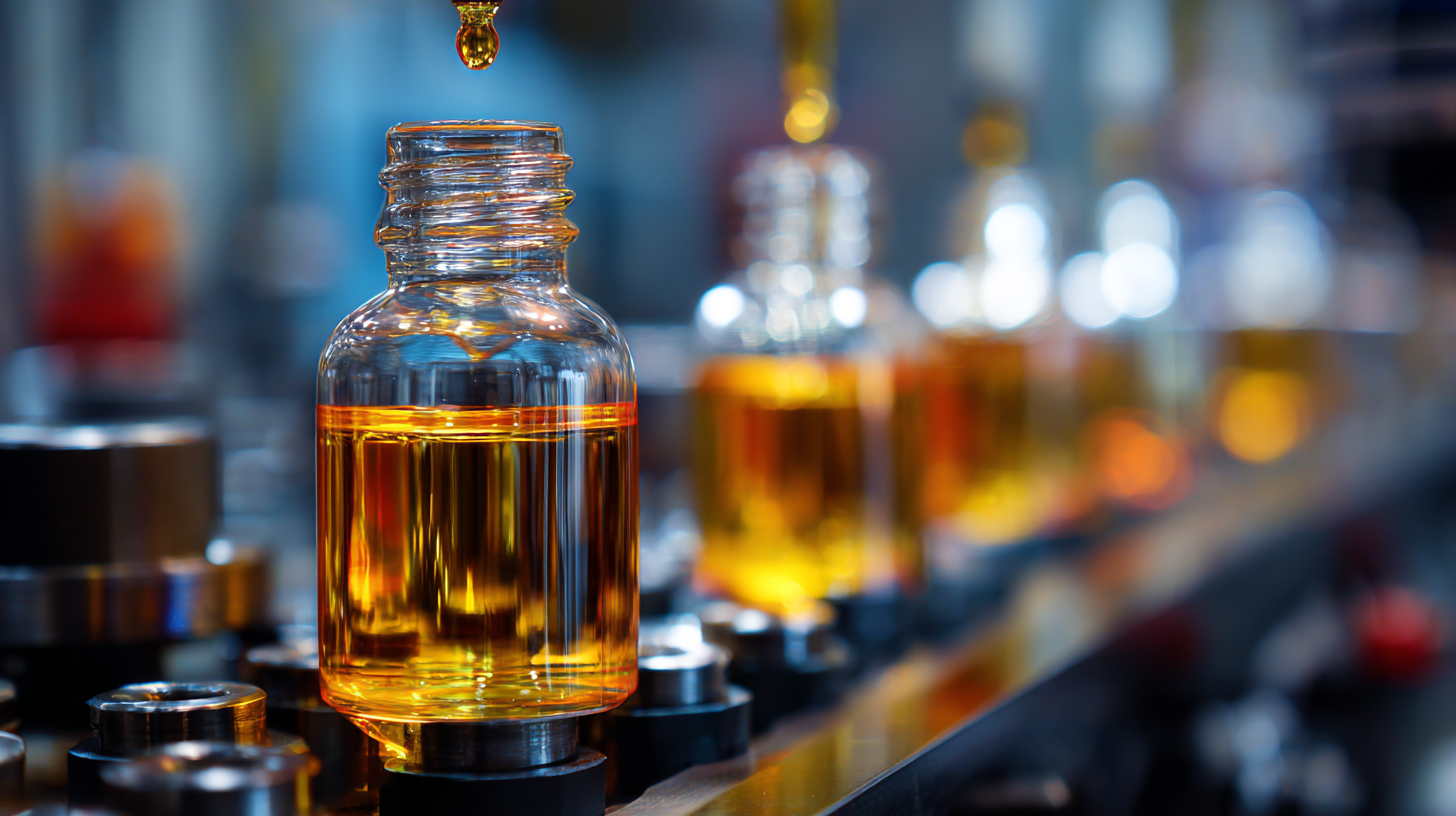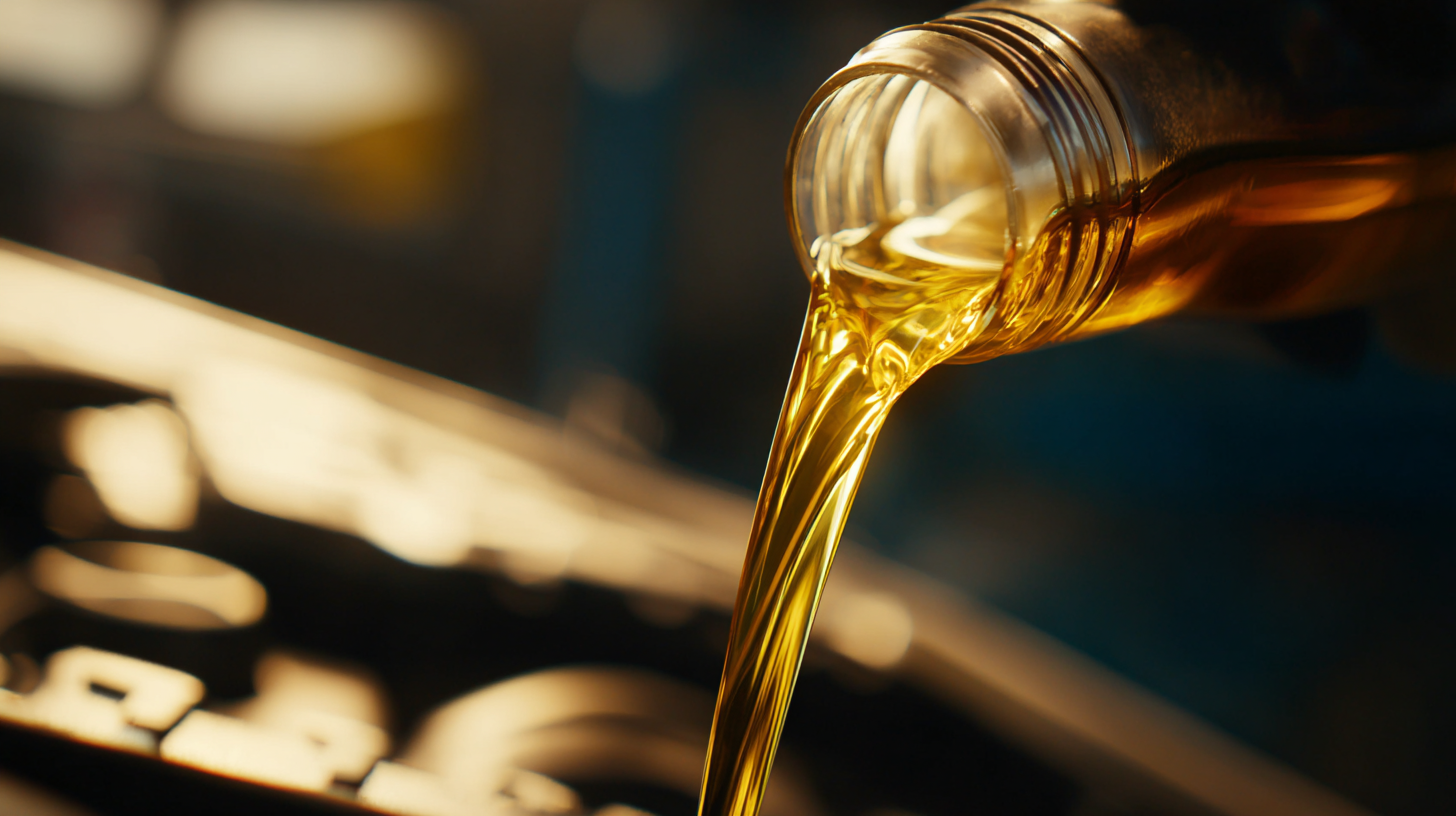Free Shipping on Orders Over $800 | Become a customer!
Menu title
This section doesn’t currently include any content. Add content to this section using the sidebar.
Your headline
Image caption appears here
Add your deal, information or promotional text
In the realm of machinery and automotive performance, the significance of high-quality lubricants cannot be overstated. As we approach 2025, the industry's focus on enhancing performance through advanced lubrication technology is more crucial than ever. Leading lubricant expert Dr. Emily Thompson emphasizes this by stating, "The right lubricant not only prolongs the life of mechanical components but also significantly improves their efficiency." This insight reflects the consensus within the industry: selecting top-tier lubricants can make a substantial difference in both operational capabilities and overall maintenance costs.
This article will delve into the "Top 10 Lubricants of 2023," highlighting industry-approved options that promise to elevate performance and reliability. Within this carefully curated list, we will explore the properties that make these lubricants essential for various applications, from automotive engines to industrial machinery. Understanding the importance of these products allows professionals and enthusiasts alike to make informed decisions, ensuring that they leverage the best solutions available in the ever-evolving lubricant market. As we spotlight these premier choices, we aim to equip readers with the knowledge needed to enhance their operational efficiency in 2025 and beyond.

When it comes to enhancing mechanical efficiency, selecting the right lubricant is crucial for optimal performance in various applications. According to a report by the National Lubricating Grease Institute, proper lubrication can reduce wear and tear by up to 50%, significantly extending the lifespan of machinery. In 2023, the lubricant market has seen various innovations catering to both industrial and automotive needs, offering superior protection against friction and heat.
For example, synthetic lubricants have gained popularity due to their superior thermal stability and reduced volatility compared to conventional oils. A study conducted by the Society of Tribologists and Lubrication Engineers reveals that synthetic lubricants can improve fuel efficiency by as much as 5% in automotive applications and maintain performance in extreme temperatures. Furthermore, biodegradable lubricants have emerged as a sustainable choice, with a report from the Environmental Protection Agency indicating that the global market for environmentally friendly lubricants is projected to grow by 10% annually, driven by increasing regulatory pressures and consumer preference for eco-friendly products. These trends underline the importance of choosing the right lubricant to enhance machinery performance while also considering environmental impact.

In the realm of heavy machinery, the choice of lubricant can significantly impact performance and longevity. The top industry-approved lubricants for 2023 have been meticulously formulated to meet the rigorous demands of heavy-duty applications. Their innovative compositions not only reduce friction and wear but also promote efficient heat dissipation, ensuring that machinery operates smoothly under challenging conditions.
Moreover, these lubricants are designed to provide excellent protection against corrosion and oxidation, extending the life of critical components. Formulations such as synthetic oils and advanced additives enhance their capabilities, making them suitable for a variety of machinery applications—from construction equipment to agricultural vehicles. By investing in high-quality lubricants, operators can enhance performance, minimize downtime, and ultimately reduce maintenance costs, achieving optimal productivity in any heavy-duty environment.
| Rank | Lubricant Type | Viscosity Grade | Application | Performance Notes |
|---|---|---|---|---|
| 1 | Synthetic Oil | 5W-30 | Heavy Machinery | Excellent thermal stability |
| 2 | Hydraulic Fluid | ISO 32 | Hydraulic Systems | High viscosity index |
| 3 | Gear Oil | 75W-90 | Transmission | Exceptional protection against wear |
| 4 | Grease | NLGI 2 | Bearings | Excellent water resistance |
| 5 | Engine Oil | 10W-40 | Engines | Enhanced fuel efficiency |
| 6 | Metalworking Fluid | Soluble Oil | Metal Cutting | Improves tool life |
| 7 | Chain Oil | SAE 30 | Chainsaws | Reduces wear and tear |
| 8 | Compressor Oil | ISO 46 | Compressors | Prevents corrosion |
| 9 | Coolant | Ethylene Glycol | Engines | Maintains operating temperature |
| 10 | Multi-Purpose Lubricant | N/A | General Use | Versatile and effective |
In the ever-evolving automotive industry, selecting the right lubricant is crucial for enhancing vehicle performance and longevity. The comparative analysis of leading lubricants in 2023 reveals significant advancements in formulation and technologies, ensuring optimal protection and efficiency across various driving conditions. Industry-approved options now offer superior thermal stability, reduced friction, and improved fuel economy, making them essential for both everyday drivers and performance enthusiasts.
Among the standout products, synthetic oils have gained traction due to their ability to withstand higher temperatures and more severe driving conditions compared to conventional oils. Formulations infused with advanced additives not only improve engine cleanliness but also extend oil change intervals, resulting in lower maintenance costs for vehicle owners. Furthermore, manufacturers are increasingly focusing on environmentally friendly solutions, incorporating bio-based components that meet stringent regulations without compromising performance. This shift emphasizes a commitment to sustainability while still delivering the reliability and effectiveness necessary for modern automotive applications.
In 2023, the lubrication industry has witnessed significant innovations that are transforming equipment maintenance practices. The top lubricants on the market now feature advanced formulations designed to reduce friction while enhancing equipment efficiency. According to a recent report by the National Lubricating Grease Institute, high-performance lubricants can improve energy efficiency by up to 5-10%, leading to substantial cost savings for operations across various sectors. These enhancements are critical in an environment where machinery uptime is paramount.

Furthermore, many of the leading lubricants incorporate unique additives that provide superior protection against wear and corrosion. For instance, using esters or synthetic base oils can result in better high-temperature stability and longer service intervals, which are essential for industries like automotive and manufacturing. Research published by the American Society for Testing and Materials reveals that lubricants with enhanced thermal stability can withstand temperatures exceeding 300°C, making them indispensable for high-performance applications.
As these innovative lubricants continue to evolve, they are setting new standards for equipment maintenance and longevity in multiple industries.
In 2023, sustainability has become a pivotal factor in choosing lubricants, as industries strive to reduce their environmental impact. Eco-friendly options now dominate the market, providing solutions that meet performance needs while being conscious of the planet. One standout innovation is derived from the macaúba palm tree, a native Brazilian resource. Researchers have developed a sustainable technology that turns macaúba into a viable alternative for industrial fats, emphasizing the importance of using local and renewable resources.
As companies evolve, it's crucial to consider how purchasing decisions can influence sustainability. Opting for lubricants made from renewable or re-refined base oils can significantly reduce carbon footprints. Additionally, exploring eco-friendly packaging options in lubricant production aligns with consumer demand for responsible sourcing.
**Tips:** When selecting lubricants, look for certifications that indicate eco-friendly practices. Supporting brands that commit to sustainability ensures that your choices contribute to a greener future. Furthermore, consider the lifecycle of the product—opt for those that can be easily recycled or come from sustainably sourced materials.
This bar chart illustrates the performance ratings of the top 10 lubricants of 2023, focusing on both traditional and eco-friendly options. Each lubricant's performance rating reflects its efficiency and sustainability in practical applications.






We use cookies on our website to give you the best shopping experience. By using this site, you agree to its use of cookies.
